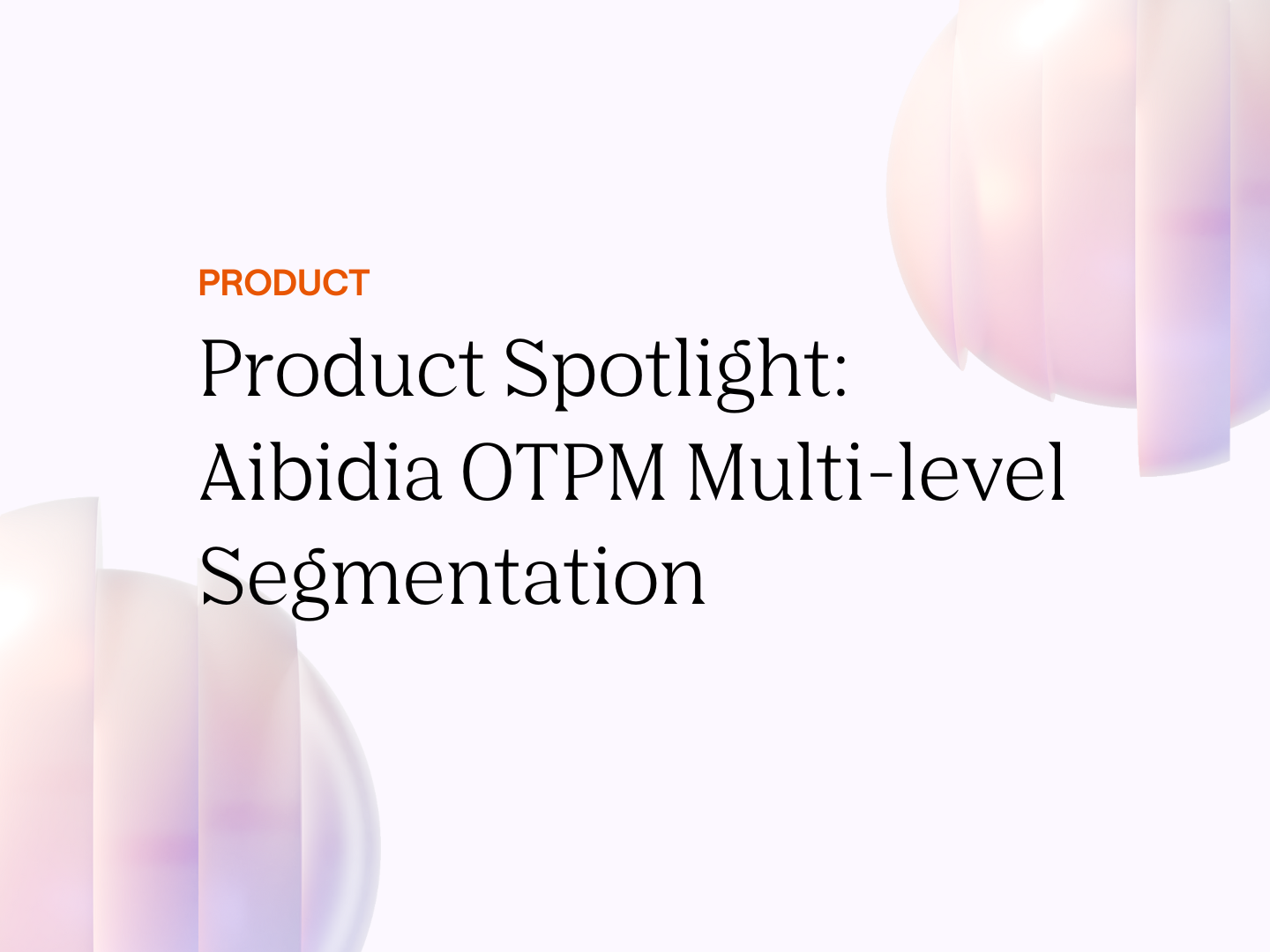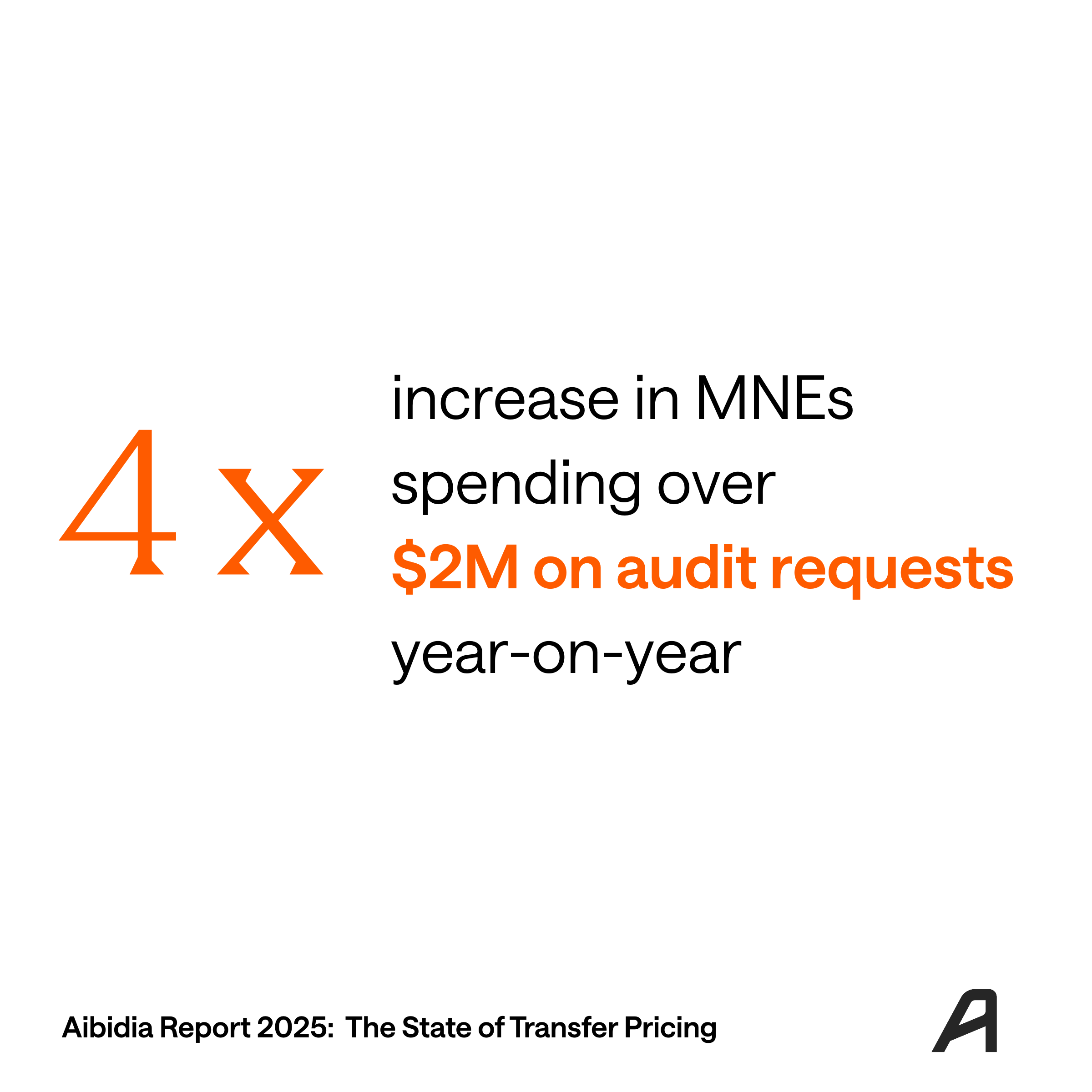In 2025, multinational companies face a pivotal shift in transfer pricing (TP) compliance, driven by evolving regulations and rapid technological change. The EU’s public Country-by-Country Reporting (CbCR) regulations are taking effect, at the same time, intensifying audit activity and new tariffs are adding layers of complexity. According to the forthcoming Aibidia 2025 Survey, while 65 percent of organizations aim for full local-file coverage, only a third have adopted proactive operational TP practices, highlighting a widening gap between ambition and execution.
Here are three crucial trends reshaping TP compliance, along with practical guidance to get ahead.
Trend #1: Transitioning from Static Documentation to Real-Time, Data- Driven Compliance
Why It’s Happening:
Tax authorities increasingly require digital, standardized data formats such as SAF-T, mandatory e-invoicing, and real-time reporting practices already in place in countries like Italy and India. The upcoming 2025 Aibidia Survey revealed, in an attempt to drive efficiencies on this front, around a quarter of MNEs have attempted to centralize TP data.
What Leading Companies Are Doing:
Forward-looking companies centralize their data sources and integrate specialized TP software enhanced by AI. This approach enable the automation of local-file documentation and facilitates monthly or quarterly monitoring and adjustments, reflecting a mature operational TP strategy. We can reveal that MNE’s claiming to have invested in TP software jumped 20% in this year’s Aibidia report vs the 2024 edition.
Action Checklist:
- Map key TP data points clearly to ERP systems (or a central data source) and assign specific data ownership responsibilities.
- Pilot an operational TP dashboard ahead of the year-end closing period.
- Allocate budget for a dedicated TP software platform by the fourth quarter of 2025.
Trend #2: Cautious but Inevitable: AI Begins Its Ascent in Transfer Pricing
Why It’s Happening:
After years of hype, artificial intelligence (AI) is finally starting to influence how transfer pricing teams work, but the pace is measured. The 2025 Aibidia Report shows that while only 2% of respondents have fully embedded AI into daily TP operations, over half plan to use it for task-specific support like memo drafting, compliance research, or answering technical questions.
The driver? Growing documentation complexity, limited headcount, and pressure to do more with less.
Generative AI and large language models (LLMs) are emerging as practical tools for time savings and first-draft accuracy especially in documentation-heavy areas. But hesitations remain around data quality, defensibility, and the lack of purpose-built TP models.
What Leading Companies Are Doing:
Early adopters are deploying AI with caution and precision.
They're integrating LLMs into workflows for routine drafting, compliance summaries, and jurisdictional comparisons, areas where speed and standardization matter more than judgment. The most effective teams combine this with strong data governance, ensuring AI outputs are accurate, defensible, and audit-ready.
Forward-thinking MNEs are also experimenting with AI-enhanced search tools to streamline regulatory research and with custom-trained models built on internal documentation libraries. The direction is clear: AI isn't replacing TP professionals - it’s amplifying them.
Action Checklist:
- Identify high-volume, low-risk tasks where AI can immediately save time (e.g., local file drafting, rule summaries).
- Test LLM-based tools in a sandbox environment before deploying them at scale.
- Develop clear review and approval processes for AI-assisted outputs to ensure defensibility.
- Establish a reliable source of quality-controlled TP data, whether by building your own centralized repository or leveraging trusted sources like IBFD via purpose-built AI tools such as TP Aurora, which provide TP insights with citation- backed accuracy.
Trend #3: Achieving Full Compliance through Technology
Why This Matters:
The upcoming 2025 Aibidia Report shows, with many companies struggling to maintain full local-file coverage efficiently. Technology-driven solutions are increasingly becoming critical to meeting comprehensive compliance requirements to meet this compliance gap.
Complete and accurate TP documentation is essential to reduce audit risks and maintain compliance. Modern technology platforms provide the capability to streamline and automate compliance processes, making full coverage both achievable and sustainable.
Recommended Actions:
- Invest in TP compliance technology solutions that offer automated data ingestion, documentation generation, and real-time reporting capabilities.
- Use analytics tools to monitor compliance continuously, proactively addressing issues before audits occur.
- Train your team on how to leverage technology effectively, ensuring they can fully utilize its capabilities for compliance excellence.
Conclusion: Take Action Now
The year 2025 is marked by substantial shifts in TP compliance. Companies that proactively respond now will successfully navigate these changes and strengthen their competitive position.








.png)

.png)
.png)






.svg)
